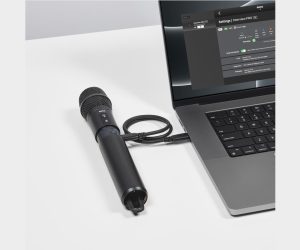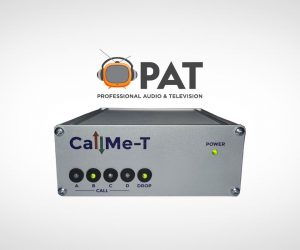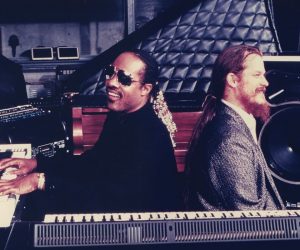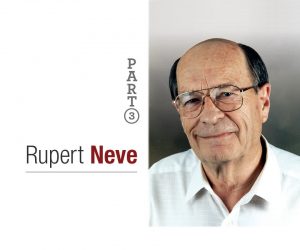
Interview with Billy Woodman
Billy Woodman, Managing Director of ATC Loudspeakers
I suppose there were two areas of inspiration for me. One, the original JBL products, because they used to make a lot of short coil/long gap design-based drivers when they first began in the ’50s and ’60s. People that influenced me greatly were Quad’s Peter Walker, Laurie Fincham and all that group of engineers that came through Goodmans.
In 1970, I went from Revolver in Melbourne to England, because I’d written to Goodmans loudspeakers and got a job with them. I played piano on a boat to get myself over there.
I learnt more about loudspeakers in my four years at Goodmans than during any other time. It was the biggest loudspeaker manufacturer in Europe — it had a huge laboratory and people there with a wealth of knowledge.
While I was at Goodmans I did a Master of Science in Acoustics at London University. In 1974, I started ATC with one 12-inch public address loudspeaker. I’ve been doing ATC ever since. It turned 40 in May.
It’s still small — 26 people — but we’re one of the biggest specialised loudspeaker manufacturers in the world. It’s what’s kept ATC alive; we make a series of highly specialised components that you can’t buy over the counter.
We’ve been able to design for performance first and then work out whether it’s viable to make. Whereas if you go to large component manufacturers for your supply, you’re stuck with what they’re making for big manufacturers — that’s the reality. Just about everywhere else has almost given up making transducers; they’ve become system manufacturers.
ATC is the only truly, vertically-integrated loudspeaker company that’s left in Britain. We can still do everything, whereas KEF and Celestion have all gone offshore.
When it’s all said and done, the maths behind loudspeaker design has been firmly established for a very long time. What’s changed is the ability to make digital measurements. Before, you had to use a lot of intuition to interpret the results. Now you can see it just through taking measurements.
All we’ve ever done is try to better engineer what’s already known. The only thing that was relatively new was the super-linear magnet. But it wasn’t patentable because it’d been used in the communications industry.
I stumbled across it by accident. I’d been looking at laminating poles to break up eddy currents and noticed a book on communication ceramics. Reading it I found someone had developed a material which was powdered iron with an oxide coating compressed into a ring — it had good magnetic permeability but high electrical resistance. Using it knocked the odd harmonic distortion down by 12-15dB.
It’s only really useful if you’re using a short coil in a long gap. Most people go a long coil in a short gap because they’re cheaper to make, but there’s no question: if you’re looking for linearity, a short coil in a long gap is by far the best solution to the problem.
In the ’90s, the big PA companies were no longer driven by performance, but cost. Cheap components were readily available from various sources in the Far East. So it meant manufacturing high-spec drive units for the PA industry — how ATC started — was going to lead us nowhere, so we continued diversifying into home theatre.
Being in the business a long time, you make sure you never let the grass grow around your feet for too long. Since 2004, we’ve been doing large auditoria.
Disney Hall opened in 2004, with acoustics by a chap called Yasuhisa Toyota of Nagata Acoustics. The sound reinforcement comprised large line arrays, which were not really appropriate for a high performance auditorium. It was brought to a head when pianist Keith Jarrett said in an L.A. Times article it was the worst auditorium he’d ever performed in and wouldn’t come back!
It’s not a good idea to use line arrays when listening to music performed onstage in an auditorium because of the psychological disconnect between your visual experience and the source of the sound. The distortion and directionality alone will drag your attention to it, because its pattern is entirely different to the pattern you’re hearing from the stage.
Although an auditorium is a large, reverberant space, the RT is usually well controlled from about 50Hz to 2-3kHz. As a consequence, you can treat it like you would a recording studio control room.
A friend of mine did all the recording at Disney Hall and dragged me in. We happened to have SCM150 monitors on hand because Pink Floyd had been launching the SACD version of Dark Side of the Moon all over The States using five SCM150s and two subs.
We did a trial run where we simply mounted 150s on top of one another either side of the stage. They ran it for four months and the criticism disappeared, so they gave us a contract to build a system for the auditorium.
Frank Gehry and Nagata Acoustics took us on the next project, which was a new auditorium for The New World Symphony in Miami. We also got the Bing Concert Hall at Stanford University, and are just about to finish the new auditorium for the Shanghai Symphony Orchestra. All as a consequence of being at the right place at the right time.
2014 marks the 40th anniversary of ATC speakers. Head designer and owner, Billy Woodman, was first interviewed in Issue 1 of AudioTechnology. In that time, ATC has come full circle, from public address, to studio monitors, into hi-fi, and recently has returned to its public address roots.
















RESPONSES